With Dr Carla van Laar AThR
Feature image credit: Carla van Laar
In this article, I share a description of my personal experience of art making to highlight the inter-relationship between art making and sensory awareness. I then invite you to engage in a creative process designed to facilitate your connection with your own somatic experiencing and relationship with your body.
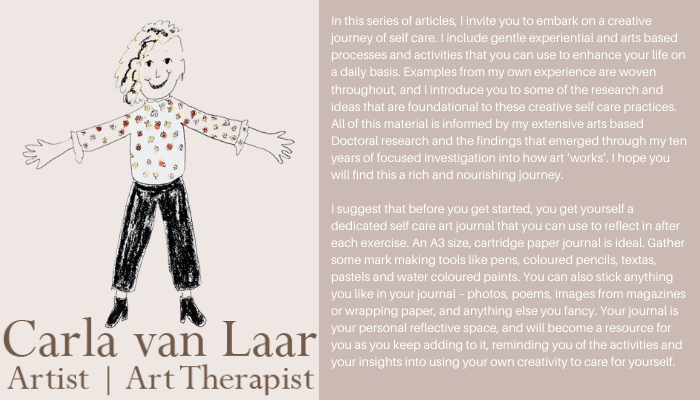
I’m going to begin by going in to some depth about my own art making process, and also look at how embodiment has been written about in art therapy literature, by sharing this extract from my Doctoral research project with you (van Laar, 2020).
…
Embodied, multi-modal knowing is present in the art-making process

Image Credit “Bush flowers”. Carla van Laar, 2013.
I have squeezed small blobs of shiny paint onto my makeshift palette, a paper plate. The smell of them is intoxicating as it mingles with the scent of the eucalypts and ocean air.
The sea wind rustles the leaves in the gum trees above me and the wispy grasses shimmer in response, the little pink flower nods her head, the waves applaud by roaring into the shore, my body is fully alive and present, my senses alert and heightened.
I’m looking carefully at the colours in the foliage, mixing paint with my brush and dabbing samples onto the leaves in front of me to check the colour match. I take deep breaths as I soothe my rising anxiety about representing this bush scene sensitively.
My eye moves across the scene, from dark shadow at the base of the stem, to bright highlight at the tip of the leaf, around the curve of petal, up the rise of a shaft of grass, into the depth of the tube at the centre of the flower, and out again to the rough skin of the log in front of it. The motion of my eye, the gesture of my hand across the canvas, the layering of pigment as I work from one area to another, seeing a tiny spot of blue grey in a shadow and the same colour used to tone down a highlight that is jumping forward too much, the hot pink of the flower hidden in the base of a stalk, I’m working around the scene, it’s a dance, it’s a flow.
I am moved in this moment. A welling sensation starts deep in my uterus, stirring my stomach, a pulsing in my heart, a hot rush in my chest, water in my eyes and a feeling of opening at the top of my skull.
I look back to my painting and load my brush with a dense mixture of pthalo blue, alizarin crimson and burnt umber, and accentuate some shadows in my painting, to create just enough definition, darkness, weight and depth.
This story illustrates my heightened awareness of sensory information in the present moment, body movements and internal awareness, including feelings in my internal female organs, as well as my attunement to the qualities of my delicate subject, the flower.
Here are some more examples of painting from life. The texture of the thickly applied paint is evidence of my embodied sensing within the environment and my responding through movement, gesture and manipulation of materials.
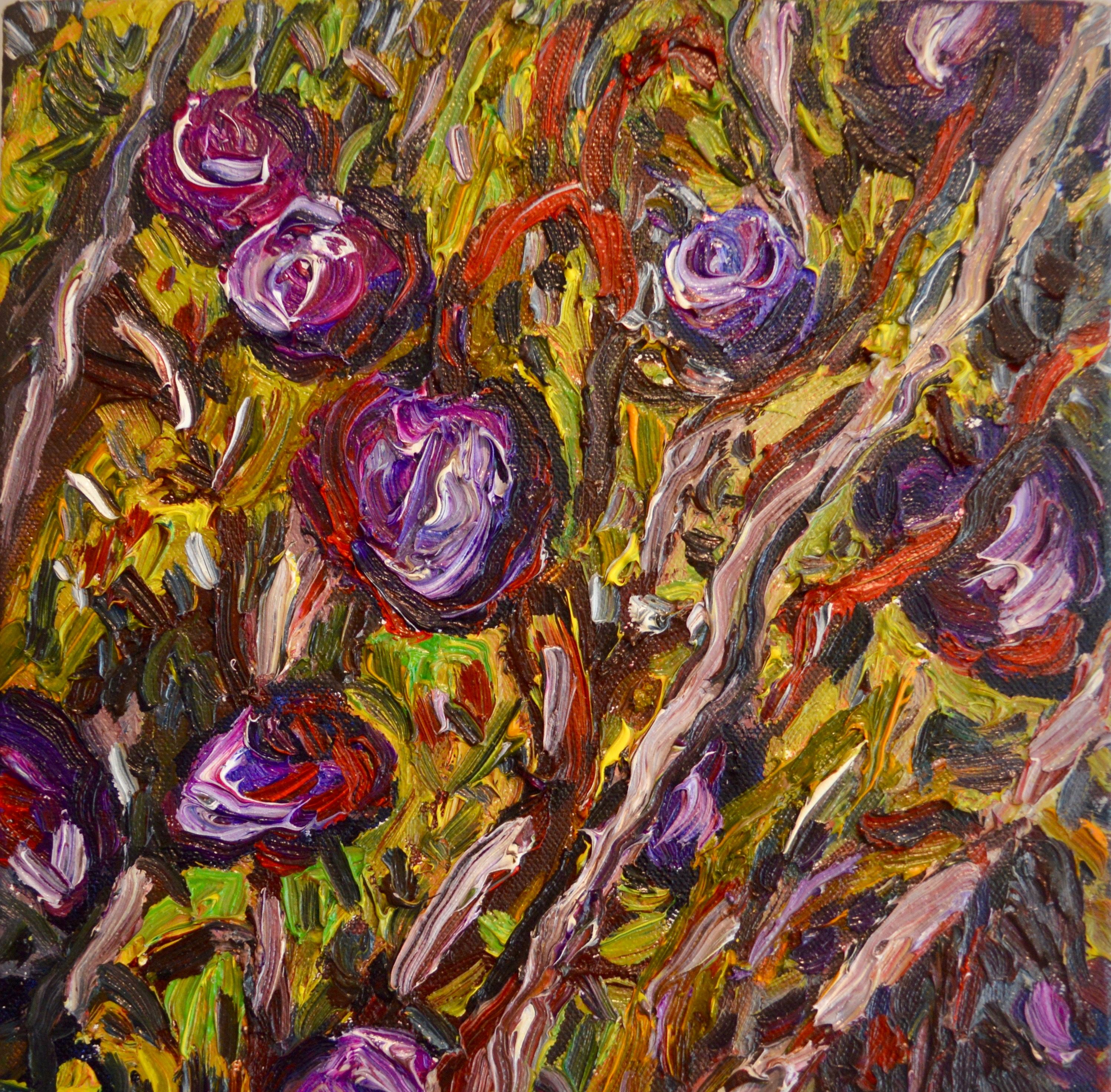
Image Credit “Bush berries”. Carla van Laar, 2013.

Image Credit “Henry’s canopy”. Carla van Laar, 2011.

Image Credit “Bird of paradise”. Carla van Laar. Oil on canvas. Hasting’s Point, 2012.
The construct of embodiment has been written about variously in the art therapy literature. Byrne (2014) describes her interest in her embodied experiencing during both the making of artwork, and being with it after completion. Elbrecht and Antcliff (2014) focus on the embodied experience of interacting with art materials, and the therapeutic qualities of kinaesthetic touch and interaction. Art therapists working with an interpersonal neurobiological approach, such as Hass-Cohen and Findlay (2015), highlight the many ways in which creative activity necessitates embodied and relational motion. Others, like McNiff (2014) and Gilroy (1996) urge us to pay attention to the image itself, seeking to understand more about the physical presence that the artwork itself possesses, the traces of embodied movement that it evidences, and the effects these can exert upon us. Art therapists such as Grainger (1996) and Lynne Ellis (2007) have emphasised artistic expressions as gestural languages capable of re-embodying socio-cultural ideas that have become dis-embodied and dis-empowering to the uniqueness and specificity of embodied experiencing. Recently, art therapists including Davis (2015) have become captivated by the integration of present moment awareness and embodiment-focused practices that draw on mindfulness, focusing and somatic experiencing. In a similar vein, McNiff (2015, 2016) draws parallels between ancient Eastern wisdom traditions and the embodiment of creative energy in art making.
In re-viewing my source material, I see traces of touch and sensation as precursors to sensory and cognitive awarenesses. I am reminded of the motor impulses, kinaesthetic efforts, and movements required to begin painting.
When I decide to start painting, the first thing I do is look around. In this activity, I am consciously engaging in seeing my own stories. I see my surroundings intentionally, noticing where my attention is drawn, what I enjoy looking at, or am interested in looking at longer and more deeply. This is like a motor impulse happening in my eyes, and if I follow where my eyes are drawn, I become aware of my somatic reactions to what I see, as well as the effect on my emotions and imagination. All of these responses to what I see are part of my stories of seeing.
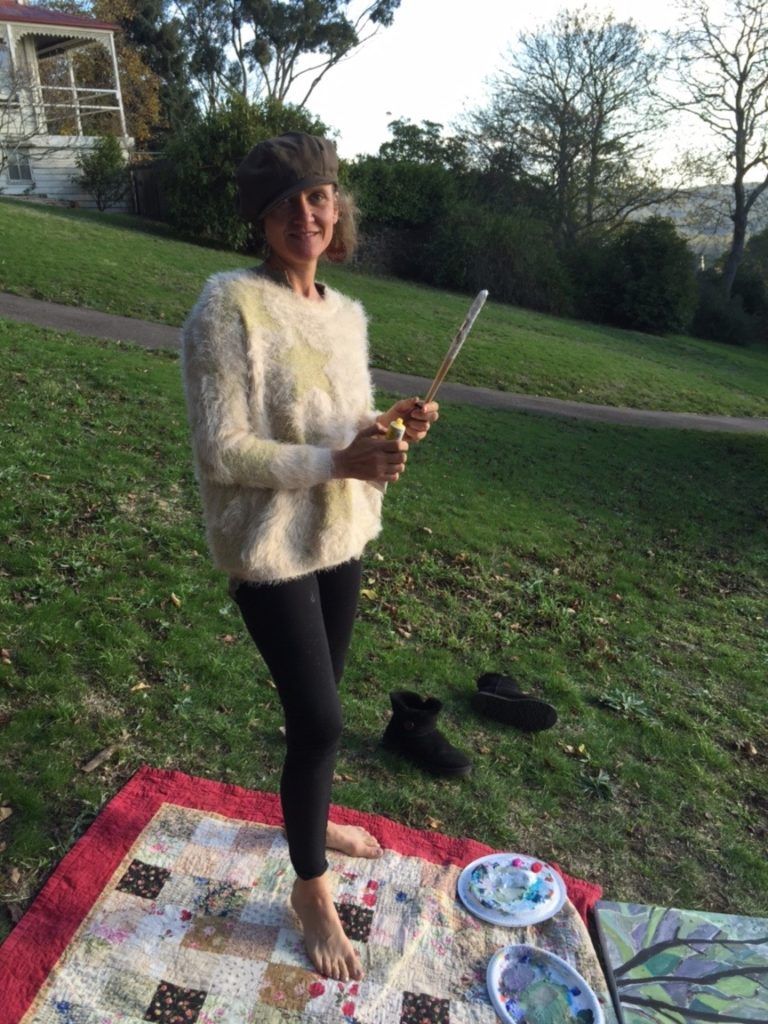
Embodiment in painting from life 1, 2016.
In setting up to paint, I engage in many gross and fine motor movements gathering my materials, canvas, paints, brushes, and arranging them in the space in relation to what I wish to see and paint. In squeezing paint out of the tube, I exert kinaesthetic pressure with the whole of my hand, creating a pressing sensation against the ball of my thumb. As I load paint on to my brush, I observe the colour, consistency and texture of my paint, in combination with small or large rhythmic rotations of my wrist as I mix the paint to a pleasing visual hue and tactile feel. I know that I am in a slightly heightened state, aroused about making the first painterly contact with the canvas.

Embodiment in painting from life 2, 2016.

Embodiment in painting from life 3, 2016.
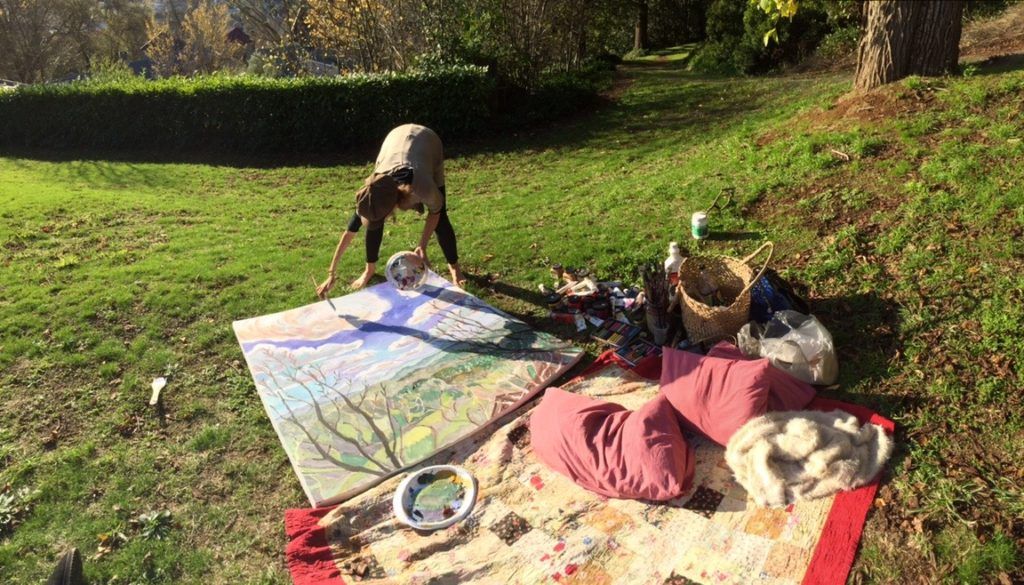
Embodiment in painting from life 4, 2016.
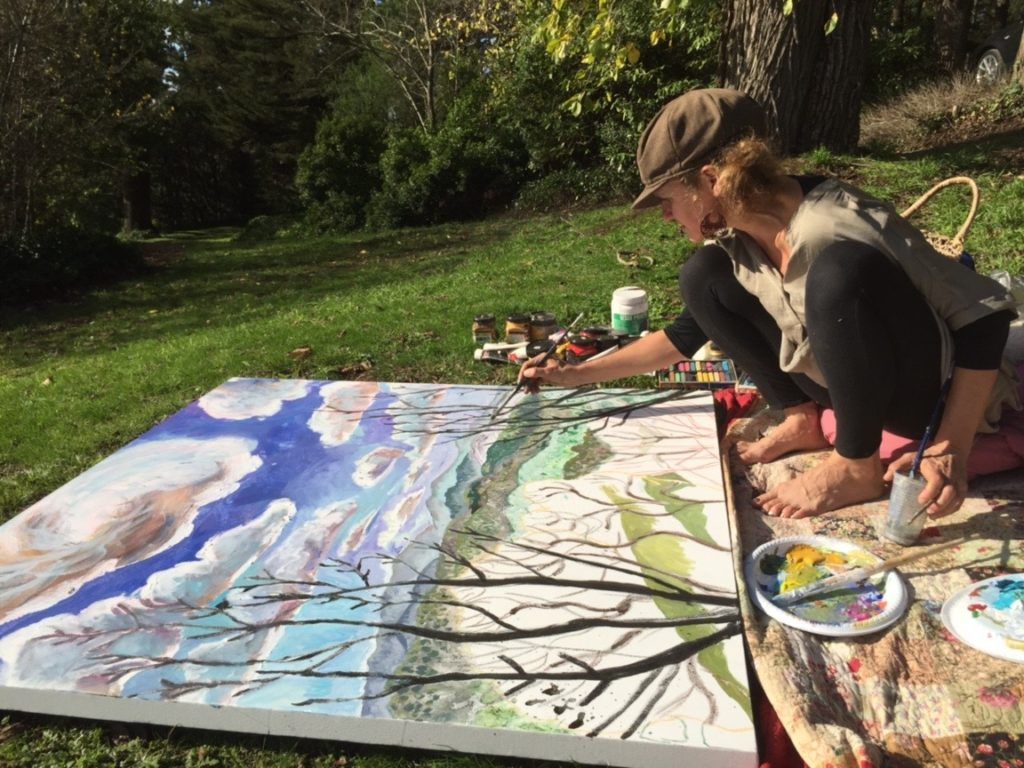
Embodiment in painting from life 5, 2016.
As I hold the brush and urge the paint onto the canvas, a satisfying connection occurs through my hand and arm as I feel the resistance of the surface and push into it with my brush and the slippery fluid medium. I continue drinking in the scene before me with my whole body, responding to my environment and the marks I am creating before me, through the movement of my muscles, thoughts and sensations. This is a very soothing activity, I know that my agitation is subsiding, I enter a feeling of calm and connection. My attention is focused in the here and now, with awareness of my surroundings, my place within them; my embodied relationship with all that I am seeing, hearing, smelling, feeling, touching and moving. The resulting artworks visually tell my stories of seeing. My stories are inevitably influenced by my physicality and the facts that I am a white, middleclass woman painter, a mother, and living in a 21st Century developed country. Nevertheless, because I am a woman, these stories are “her stories” about what I see and how I respond to my seeing.

Embodiment in painting from life 6, 2016.
In my own experiences of painting, I often engage in emotional connection with my subjects through my embodied motions, both gross motor movements of my entire body, and fine motor movements of my hands and face.
(van Laar, 2020. pp. 154 – 160)
…
I invite you to let my description warm you up to being aware of your own embodied experiencing as you move into the next activity, “Mapping the Territory of your Body”
Mapping the Territory of your Body
You will need
The largest paper you can get. If you don’t have really big paper, you can stick pieces together.
OR, you can do a smaller scale version in your Art Journal.
Pastels, paints, pencils, markers – what ever you would like to use for mark making, drawing and painting.
You can even gather some collage materials such as pictures from magazines, fabric scraps, coloured paper or found object. If you want to stick them on, you will need some glue.
…
The Process
Imagining yourself as a continent
Get yourself comfortable. You might like to lie down. Pay attention to your breath, notice yourself breathing in and out.
Bring your awareness into your feet and let your awareness travel up your whole entire body, through your legs, pelvis, abdomen, chest, back shoulders, arms, hands, neck and head. As you move your awareness through each part of your body just notice what sensations are present there. You don’t need to try and change anything, simply pay attention to what is there.
When you have scanned your entire body, notice your body as a connected whole.
I would like to invite you now, to use your imagination. See if you can imagine your whole body as a continent, a large mass of land. With your imagine, tune in to your body as a continent, noticing the various kinds of landscapes of this territory that is you, your body, your continent.
You may pay attention to areas that are inland, and areas by the coast. There may be areas that are dense forest or bushland, areas that are desert, areas that are undulating and mountainous, areas that are flat and expansive.
You may notice the weather patterns of your continent. Are there areas that are hot and sunny? Cold and wet? Windy? Balmy? Cloudy? Stormy? Calm and still?
Notice the time of day in the various parts of your continent. Is is daytime or night time in the different places? Is the sun coming up or going down?
Spend some time lying there, imagining, and noticing all the detail you can in your mind’s eye.
Mapping your territory
When you are ready, gently open your eyes and move towards your art materials.
If you have a big enough piece of paper, you can lie down on it and trace around your body. Alternatively, you can draw the outline of your body on the page or in your journal, like a gingerbread person figure.
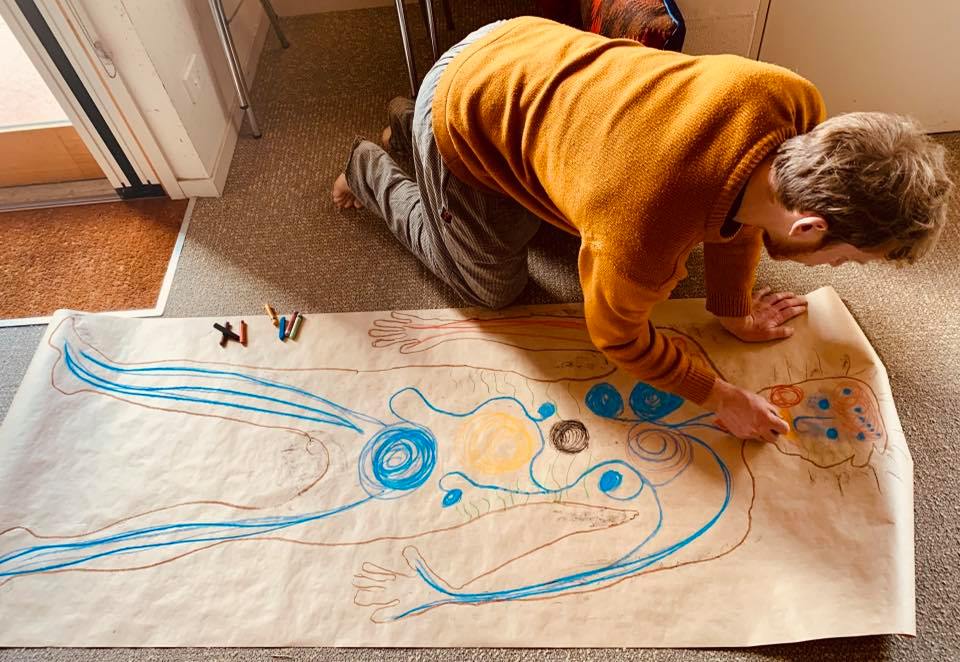
Using the materials you have gathered, map out the territory of your body on the paper, using the previous visualisation as a starting point. Don’t worry if your map changes or is different to what you saw in your mind’s eye, this is part of the process.
Keep adding to your body map until you feel that you have completed. Then stand back and have a look. What else does it need? Do this a few times until you are finished.
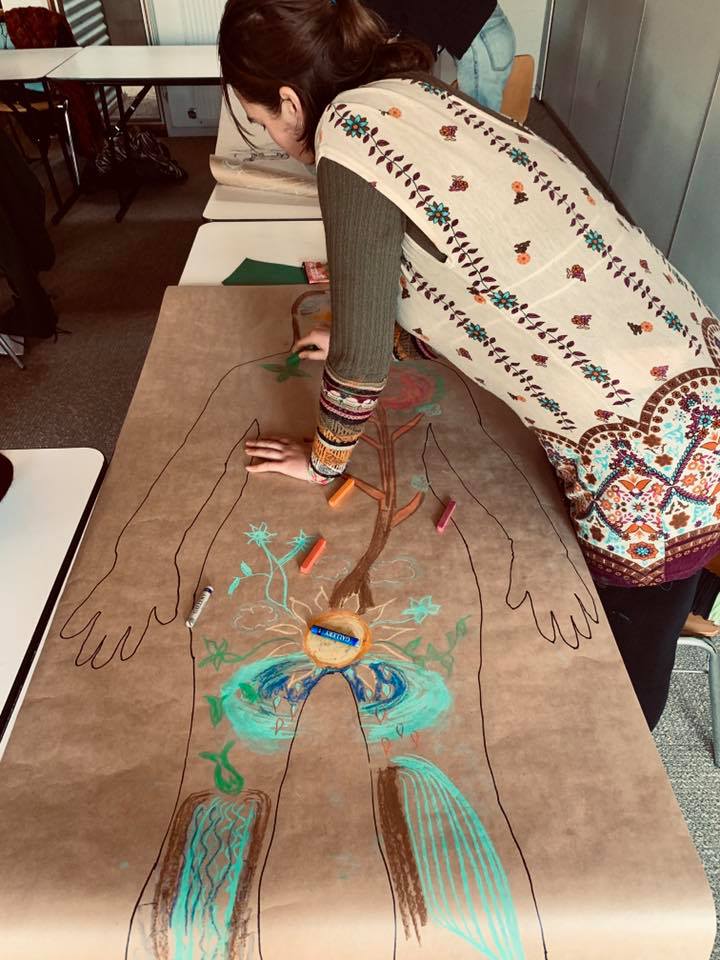
…
Questions for reflective journaling
What was it like to imagine your body as a continent?
Describe the areas of your continent.
What did you notice, and even learn from engaging with your experience of your body in this way?
Did anything change in your relationship with your body through making the body map? What changed?
What seems important to you now that you have completed this exercise?
…
References
van Laar, C. Seeing Her Stories. Carlavanlaar.com, Brunswick, Australia.
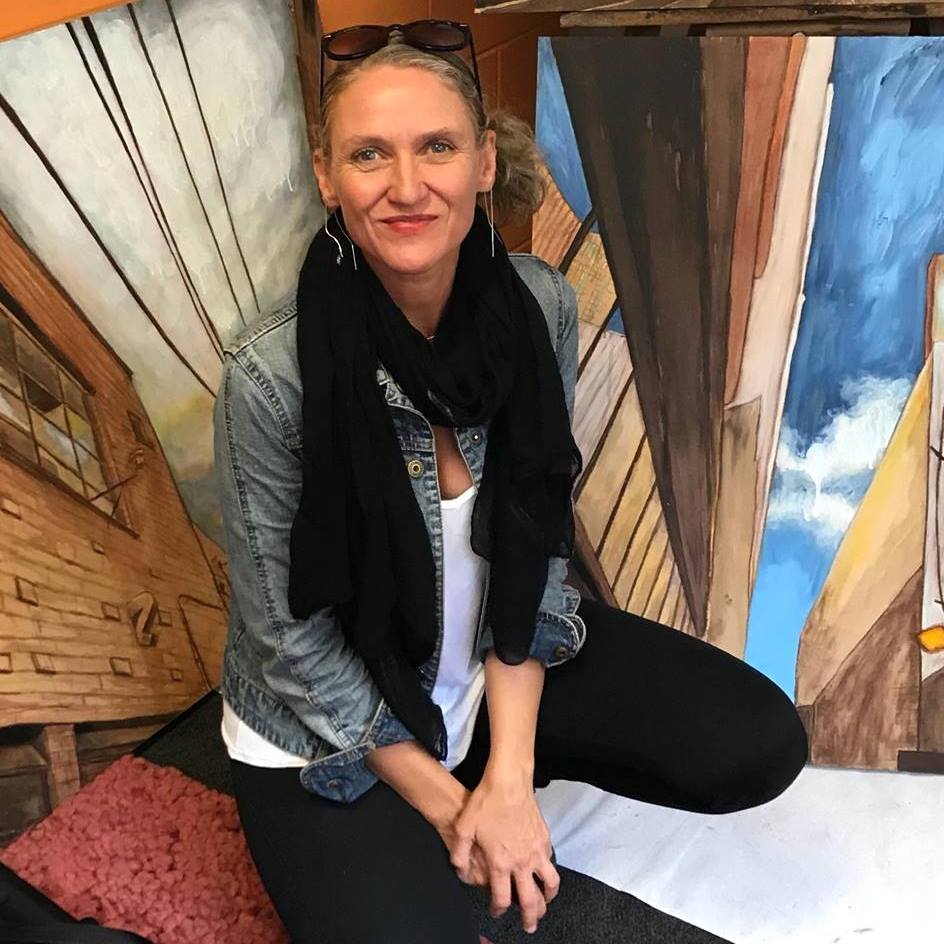
Dr Carla van Laar
Artist | Art Therapist
Master of Creative Arts Therapy
Doctor of Therapeutic Arts Practice
PACFA Reg. Clinical and Accredited Supervisor – PACFA
Carla van Laar is a painter and therapeutic arts practitioner from Australia. Born in Brisbane, Carla is first generation Australian on her Dutch grandparents side, and 7th generation through her maternal bloodline who were mostly English and came to Australia in the early colonisation of the 1800s. Carla currently lives and works in Victoria, residing between Wurrundjeri country in Melbourne, and Boon Wurrung country in Inverloch, paying deep respects to the First Peoples of the Kulin Nations whose land was never ceded and will always be Aboriginal land. Identifying as a cisgender woman, Carla is passionately disinterested in socially constructed identities that disempower anyone. Carla has over 25 years’ experience working with people and the arts for health and well-being in community organisations, justice, health and education contexts.
Carla’s first book “Bereaved Mother’s Heart” was published in 2007 and broke social taboos about maternal grief. From 2008-18 she established and ran an independent art therapy studio and gallery in Melbourne. Her Doctoral research “Seeing Her Stories” continues the mission to make women’s stories visible, through art.
Carla has lectured and supervised Art Therapy students at RMIT, MIECAT and currently the IKON Institute. She is a practicing artist and in 2018 received an Artist Fellowship at RMIT’s creative research lab, “Creative Agency”. She insists on being part of a creative revolution in which art re-embodies lived experience, brings us to our senses, makes us aware of the interconnectedness of all life and is an agent of social change.
Carla’s new book “Seeing her stories” presents her research into making unseen stories visible through art, and is available to read for free online here or purchase a hard copy of the full colour hard cover coffee table book here.
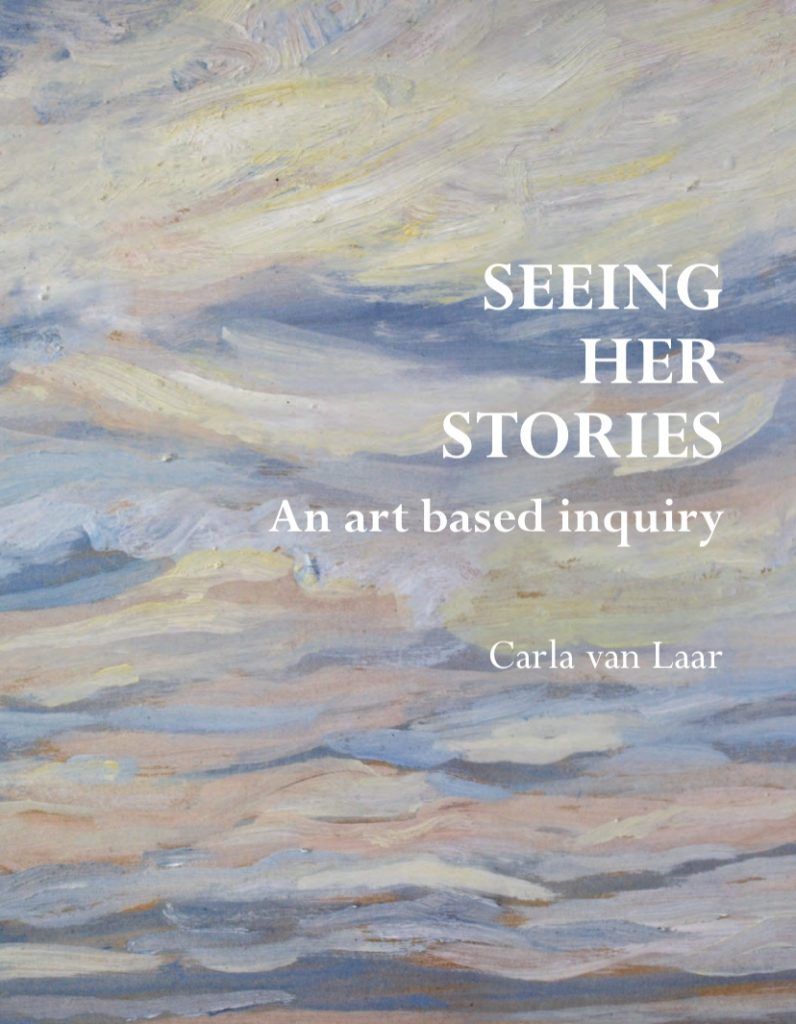


Leave a Reply